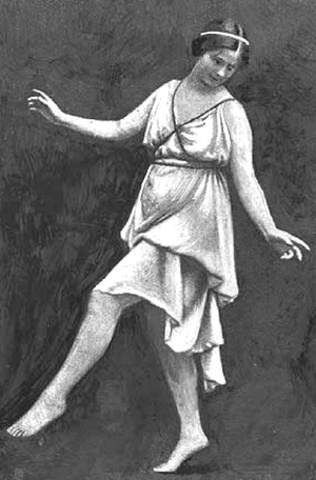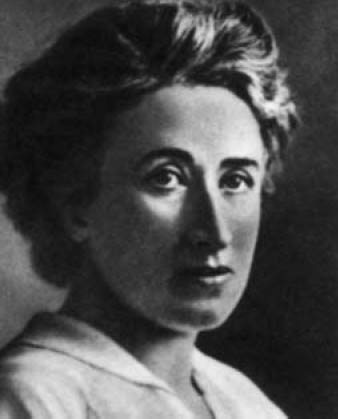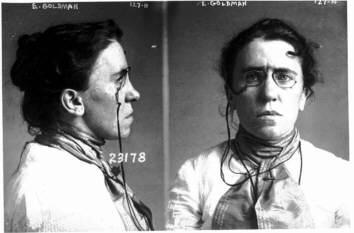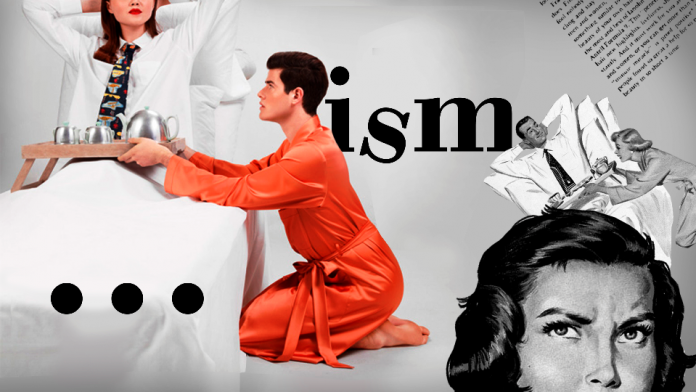In this three-part series, Paula Adamick explores the impact and legacy of the lives and lies of some of feminism’s most influential – some might say infernal – icons …
In an edition of 60 Minutes a few years ago, CBS’s Norah O’Donnell interviewed Cardinal Sean O’Malley. A Capuchin and the archbishop of Boston, O’Malley was appointed in April 2013 to an advisory board of eight cardinals to assist Pope Francis in reforming the Church’s central administration. In a wide-ranging discussion about issues currently confronting the Catholic Church, including child abuse, O’Donnell suddenly demanded to know why women cannot be ordained as priests? This just isn’t fair, she insisted.
The cardinal replied that women cannot be priests for the same reason that men cannot be mothers.
“The tradition in the Church is that we ordain men,” he said. “If I were founding a church, I’d love to have women priests. But Christ founded it and what He has given us is something different.”
But O’Donnell was not to be placated – like so many other women who never allow their assumptions to be challenged by the immutable facts of life. And whose naivete and lack of knowledge would shame them if they had a clue. Which they do not.
Indeed, so poor has been the catechesis of women in recent decades that many won’t have read St.Paul or his epistolary admonitions that sound so eerily contemporary: “For the time will come when they will not endure sound doctrine,” St. Paul wrote to Timothy. “But wanting to have their ears tickled, they will accumulate for themselves teachers in accordance with their own desires, and will turn away their ears from the truth and will turn aside to myths.”
Neither will they be aware of his uncannily accurate descriptions of certain “weak women weighed down with sins, led on by various impulses, always learning and never able to come to the knowledge of the truth.”
So how did we get here?
Well, it’s taken more than 160 years for the edifice once called Christendom to collapse into the culture of mindless assumptions and easy ignorance seen everywhere today.
And while there’s plenty of blame to go around, the chief culprit in Christendom’s demise has been the ‘ism’ with many names. Today it’s called Progressivism, the current moniker for the ‘ism’ once known as communism and/or socialism, its softer-though-highly-pernicious sister.
Regardless of the name it’s currently calling itself as it burrows ever deeper into the culture, it is and always has been the murderous enemy of the Catholic Church.
At its heart is a Utopian dream – a fantasy of how life should be. Not how life actually is, as determined by the natural law that binds Mankind and the Church to obedience to it and which the Church has no power to change, even if it wanted to.
To the communist/revolutionary/anarchist, however, the natural law does not exist. Or, if it does, it does not apply to them. Which is why, according to their ideology, the natural law must be rebelled against, rejected, repealed and upended. And replaced with new, more ‘compassionate’ laws and cultural suppositions. This is also why, in order to keep persuading people of its ‘harmlessness’ and even ‘moral superiority’, this ongoing rebellion against the natural law is entrusted nowadays to ‘caring’ individuals found in the media, the judicial system and academia, all of whom continue their ongoing indoctrination of new generations, while remaining oblivious to the moral and physical hell communism has unleashed since Marx and Engels published their Communist Manifesto of 1848.
Oh, but that was then and this is now, they’ll argue, as they purposely ignore this ideology’s bloodsoaked history and mistake its feminist avatars and rebels — who began to appear long before the Bolshevik Revolution — for heroines, failing to recognize their connection to the international movement that secured communism’s first victory in Russia in 1917 … mere weeks after Our Lady’s final apparition at Fatima and ultimately fulfilling her every prediction. Not vaguely but exactly!
They’ll also try to persuade you that communism is passé, that it’s over, that it died with the collapse of the Berlin Wall in 1989. Which is nonsense on stilts, purposely designed to deceive, when all the evidence shows that not only is communism alive, well and still with us, its errors have spread, literally, throughout the world, and continue to deprave every Christian institution it has infiltrated and infected.
Out of Hell
Too much of a stretch? Consider the historical facts. Communism, as the most logical and extreme form of Socialism, is the revolutionary theory of Karl Marx and Friedrich Engels. Its underlying philosophy is materialistic and deterministic. It constructs its social order through economic struggle between the classes and races, all aimed towards violent revolution and a dictatorship of the proletariat, to be followed by the construction of an atheistic society where ownership of all things is common.
At least, that’s how it was supposed to be after Russia became the brutal dictatorship known as the Union of Soviet Socialist Republics (USSR), thereby fulfilling Stalin’s boast: “The dictatorship of the proletariat is a power which is restricted by no laws, hampered by no rules, and based directly on violence.”
And since then, this has been the unfortunate and predictable future of all nations – from Cuba and Cambodia to China and Venezuela – that have succumbed to its scourge, a scourge that continues to seduce individuals and entire populations to this day with the same powerful ideas and promises that first enslaved Russia and then spread her errors throughout the world. Just as Our Lady predicted at Fatima. And it’s still spreading as communism’s grisly progress remains largely ignored, allowing its seeds to continue to reap the whirlwind paved by communism/socialism and its army of avatars.
Army of Avatars
Among them were Isadora Duncan, Rosa Luxemburg and Emma Goldman whose appearance coincided with the arrival of Bolshevism and its bastards.
All three were born rebels whose lives confirmed their belief that if a law or tradition felt oppressive, it was unjust and must be ignored, violated or struck down. Thus these free spirits became icons of 20th century feminism and ideological patronesses of the unhappy women who followed them in the vain hope of finding happiness by abandoning their natural role and purpose which feminists had long deemed ‘ugly’ and ‘enslaving’.
Too radical an assessment? Not to the popes who long ago saw the threat coming. Beginning with Pius IX who, as he watched Italy’s cultural firmament shaken to its roots, warned the flock in his 1849 encyclical Notis et Nobiscum. “The goal of this most iniquitous plot is to drive people to overthrow the entire order of human affairs and to draw them over to the wicked theories of this Socialism and Communism, by confusing them with perverted teachings,” the Holy Father wrote. “But these enemies realize that they cannot hope for any agreement with the Catholic Church, which allows neither tampering with truths proposed by faith, nor adding any new human fictions to them.”
Nor has there been any respite for the shepherds since then. Nor for their sheep whose inner peace has been perpetually disturbed by armies of troublemakers in search of power, attention and peace of mind, including those countless discontented women driven to turn every tradition of femininity on its head.
Isadora Duncan
Popularly called the Muse of Modernism, Isadora Duncan was born in San Francisco in 1877 to a thrice-married father and Catholic-turned-atheist mother who encouraged her daughter to a life of ‘paganism’ which soon found its expression in modern dance and free love.
 “I am called Isadora. That means Child of Isis,” Duncan wrote in her memoirs. “The gods sell their gifts early. For every joy, there is a corresponding agony. For what they give of Fame, Wealth, Love, they extract Blood and Tears and grinding Sorrow. I am continually surrounded by Flames.”
“I am called Isadora. That means Child of Isis,” Duncan wrote in her memoirs. “The gods sell their gifts early. For every joy, there is a corresponding agony. For what they give of Fame, Wealth, Love, they extract Blood and Tears and grinding Sorrow. I am continually surrounded by Flames.”
And so it was. From age 22, Isadora lived in Europe where she revolutionized 20th century dance and performed throughout the world, captivating audiences in the United States, Europe and Russia with her free-form style and leading the way for other dance pioneers such as Agnes deMille and Martha Graham.
As the founder of schools of dance for children in France, Germany and Russia, Duncan was also openly critical of the structured discipline demanded by classical ballet, notably the Russian Imperial Ballet where she regarded its famed prima ballerina, Anna Pavlova, as suffering needlessly.
“The whole tendency of this training seems to be to separate the gymnastic movements of the body completely from the mind,” she wrote of classical ballet. “This is just the opposite from all the theories on which I founded my school, by which the body becomes transparent and is a medium for the mind and the spirit.”
Isadora had many lovers as well, among them Paris Singer, one of the many sons of Singer Sewing Machine Company founder, Isaac Singer. With Paris Singer, she bore two children out of wedlock – Deirdre and Patrick – only to lose them tragically in 1913 when the car in which they were passengers drove off a bridge in Paris, and they drowned. Free love, it seemed, was not free, which may be why the bisexual Isadora called it ‘Love’s Calvary’ – a description of the toll it took on her life.
But that didn’t discourage Duncan’s flouting traditional morality, nor her leftist sympathies, or her violent enthusiasm for Bolshevism. “On the night of the Russian Revolution I danced with a terrible fierce joy,” she wrote. “My heart was burning within me at the release of all those who had suffered, been tortured, died in the cause of humanity.”
Still later, such sympathies were again ignited in the arms of Russian poet Sergei Yesenin, eighteen years her junior. The couple married in 1922 and toured Europe and the U.S., from where she was exiled after waving a red scarf and baring her breast on a Boston stage while proclaiming: “This is Red! So am I!” Yesenin left Duncan the following year. He committed suicide in 1925, aged 30.
By then, Duncan’s nearly hysterical exuberance had collapsed into grief-stricken depression.
In 1927, as the financially strapped and often publicly drunk dancer was working on her memoirs in Nice, France, she was killed one evening while joyriding in a Bugatti; the silk scarf draped around her neck suddenly caught in the rear axle, breaking her neck. It was rumoured the lonely dancer, then 50, was off to yet another tryst with yet another nameless lover.
So ended the life of Isadora Duncan, icon, friend to every famous modernist of her age – from Sergei Diaghilev to the occultist Aleister Crowley – and enduring example of how not to live.
Oh, but that’s so harsh, you might say. So judgmental.
As the facts speak boldly for themselves, what then do you make of the life of Rosa Luxemburg?
Rosa Luxemburg
Though her motivations were familiar to most women, the life of Rosa Luxemburg illustrates how the embrace of a bad idea leads to spiritual destruction and death.
Born in Russia-controlled Poland in 1871, Luxemburg was a vibrant Jewish intellectual who earned a PhD at the University of Zurich where she also met the love of her life, fellow revolutionary Leo Jogiches, with whom she lived for fifteen years, much of the time unhappily. Nevertheless, as a socialist and Marxist theorist, Luxemburg viewed the then untested Marxist philosophy as the answer to the inequities of life in eastern Europe and the world. As a revolutionary, she was a hands-on community organizer too, who arranged labour strikes for social change. She also cofounded the first Polish Marxist Workers’ Party and various communist newspapers to support the cause of revolution which, she believed, must occur spontaneously rather than through violence. Thus did Luxemburg make an enemy of Vladimir Lenin and Leon Trotsky who responded to her criticism by arguing that, although her notions were classically Marxist, they did not fit Russia in 1917 where the Bolshevik Revolution was turning that country into an abattoir.
 Like Duncan, Luxemburg took a disdainful view of marriage as well, having been scandalized by the many miserable marriages she witnessed around her. But she was a romantic too, spending much of her life reading the poetry of Polish revolutionary Adam Mickiewicz and yearning for perfect love and a child, only to be thwarted by the men she loved.
Like Duncan, Luxemburg took a disdainful view of marriage as well, having been scandalized by the many miserable marriages she witnessed around her. But she was a romantic too, spending much of her life reading the poetry of Polish revolutionary Adam Mickiewicz and yearning for perfect love and a child, only to be thwarted by the men she loved.
Still, Rosa had made her choices. Which meant that throughout her 30s and 40s, Luxemburg was living the life of a revolutionary feminist, spending time in and out of jail and, as World War I was ending, fomenting revolution in Germany.
Then came the end. In late December 1918, Luxemburg and fellow revolutionary, Karl Liebknecht, took part in the joint congress of independent Socialists and the International Communists of Germany (IKD). This led to the formation of the Communist Party of Germany (KPD) under their leadership. Luxemburg voted for the new KPD to participate in the Weimar National Assembly that founded the Weimar Republic but she was outvoted.
Days later, a revolutionary wave swept Berlin, prompting the Social Democratic leader, Friedrich Ebert, to order the Freikorps to destroy the left-wing revolution.
On January 15, 1919, Luxemburg and Liebknecht were arrested in Berlin, questioned and shot dead. Luxemburg’s body was then flung into the Landwehr Canal where, more than five months later, it was found and identified, her warm womanly words and loving letters to her parents that marked her personal life, long forgotten. Another casualty to the ideology which, for the rest of the century and beyond, caused ever more corpses to mount into the tens of millions.
Emma Goldman
Meanwhile, as Luxemburg’s body slipped into the canal, the rebel’s rebel, Emma Goldman, was about to slip into obscurity the same year after she declared her disgust with the thuggery of Soviet communism. Goldman died in Toronto in 1940.
Yet some thirty years later, as if by magic, the phoenix rose from the ashes to meet the first wave of babyboomer feminism in the 1970s. It was then that Goldman was elevated to iconic status by feminist and anarchist ‘scholars’ eager to introduce anarchism into gender politics.
Born in Lithuania in 1869, Goldman emigrated to the U.S. at age 16. There she became a committed anarchist, playing a crucial role in the development of that political philosophy in Europe and North America. As the public voice of anarchist philosophy, women’s rights and social issues, Goldman was soon attracting huge crowds to her lectures on a variety of topics from atheism, militarism and free love to capitalism, marriage and homosexuality.
 Along with her lover, Alexander Berkman, she also attracted police attention for the political lawlessness she endorsed, including politically motivated assassination, inciting riots for political purposes and illegally circulating information on birth control, which earned her several stints in jail over the years. In 1906, Goldman founded the anarchist journal, Mother Earth, as well.
Along with her lover, Alexander Berkman, she also attracted police attention for the political lawlessness she endorsed, including politically motivated assassination, inciting riots for political purposes and illegally circulating information on birth control, which earned her several stints in jail over the years. In 1906, Goldman founded the anarchist journal, Mother Earth, as well.
But she wasn’t finished. A decade later, as the U.S. was entering World War I, Goldman and Berkman were sentenced to two years in jail, this time for conspiring to “induce persons not to register” for the draft. After their release from prison in 1919, they were arrested again and deported to Russia, which was still in the throes of the Bolshevik Revolution, which she initially supported.
It didn’t take long though for Goldman to become disillusioned with the horrific violence and repression Lenin and his henchmen had wrought. Still, despite her public denunciation of the Soviet Union’s leadership, she did not lose her faith in anarchism, as confirmed by her visit to Spain during the Spanish Civil War, which broke out in 1936.
Thus, because of her various pivotal activities, Goldman became an essential buttress in the ideological bridge that spanned the 19th and 20th centuries. Apart from playing her own part in the wilful and intentional collapse of Christendom via socialism/communism, it was also Goldman who paved the way for arguably the most influential – and destructive – feminist of the 20th century, Margaret Sanger, and the Planned Parenthood network she spawned.
Damage, depravity and death
Bottom line? The rise of feminism and the rise of socialism/communism are intrinsically connected. No society can host one without the other. Nor can the Lord God of the Bible, of the Ten Commandments and of the Catholic Church on which Christendom has been built, co-exist in the same space.
The truth is that as the world’s infatuation with this ideology began to rise in the 19th century along with feminism and its demonic doctrines, so did its rise demonstrate its intrinsic hatred of God and His laws. Which it worked feverishly to overturn – so that it and its attendant ‘isms’ could rule humanity absolutely and influence and degrade the condition of the human soul.
This is why as this ideology has insinuated itself into the public square, the Lord God has been gradually pushed out. And why the rictus smiles of ever more women, while ‘celebrating’ their feminism, are masking thwarted and even tragic lives, just like the women profiled above.
They, like their cultural disciples, were encouraged to think that marriage and a woman’s traditional role in society were merely constructs of Man, not God, and were therefore mutable if the right pressures were applied.
This was wrong, of course. So were they, the socialists and their feminist minions – as their abandonment of their natural role attests.
And did their forsaking home and hearth in search of more ‘meaningful’ lifestyles – while simultaneously endorsing contraception and the killing of their inconvenient preborn babies – make them happy?
Try as they might to alter the natural law and the very facts of life, they failed. Then and now. Personally and in the public square. And the passing of time has done nothing to alter this God-created reality, as the social and spiritual damage continues to mount and as the minions of this destructive ideology continue to promote every form of social, cultural and actual suicide known to man – from abortion to euthanasia – all in the name of human rights and so-called liberation.
In the end, disobeying God carries a high, often fatal, price. Always.
(to be continued)











